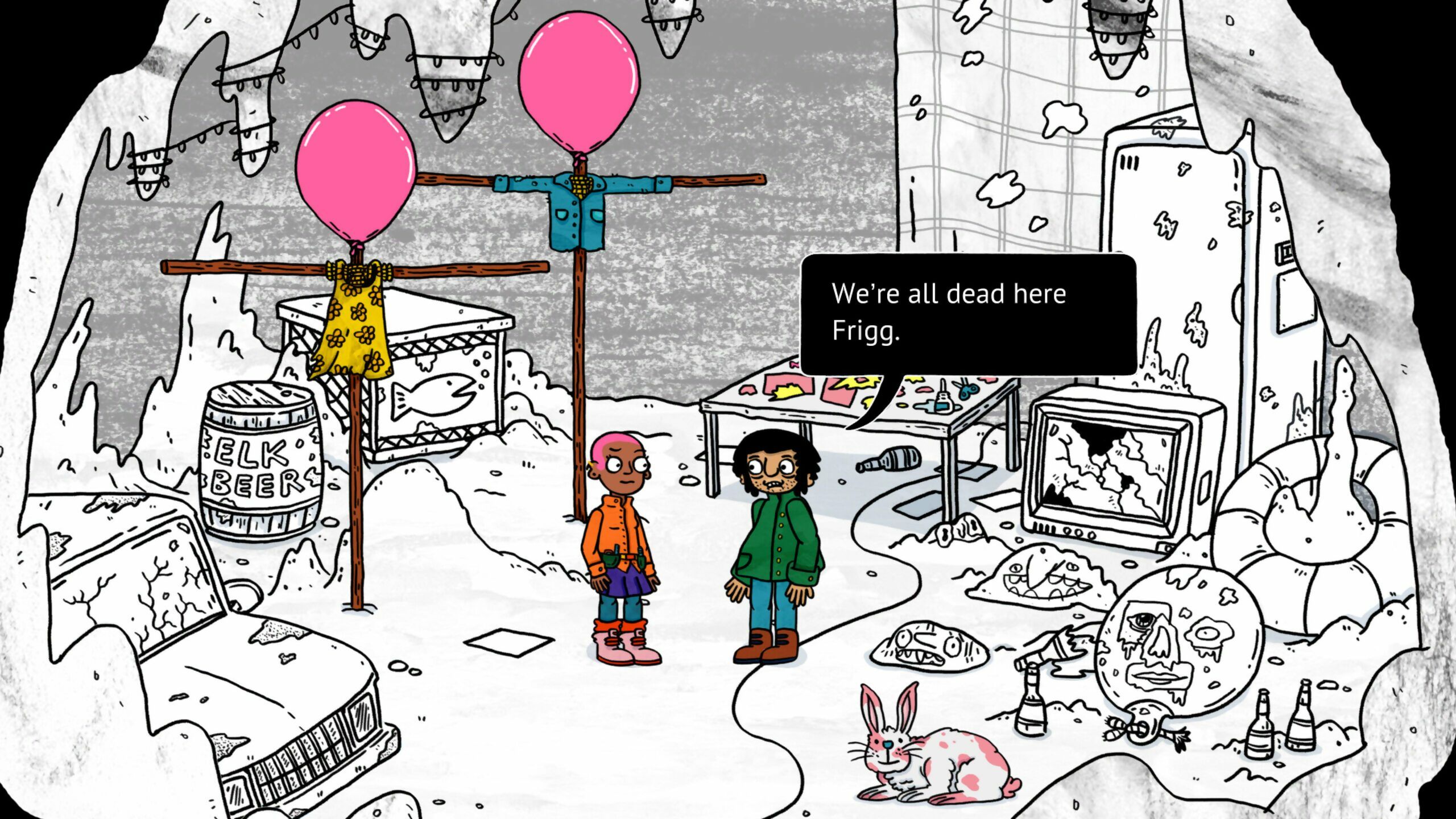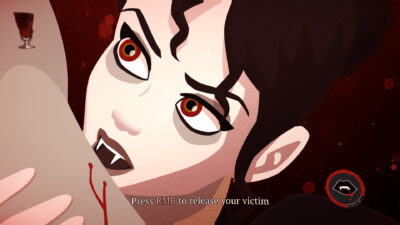
Take a look at the screens of Welcome to Elk across these pages. Then take a look at the game’s content warning: “The game contains scenes including deaths, and children experiencing murder and death. Alcohol abuse, prostitution, violence, and offensive language.” Doesn’t seem to track at first glance, does it?
But that’s part of the point: a linear narrative title mixed with minigames, Welcome to Elk draws players in with its unassuming looks, then hits them hard with stories of genuine impact.
Some of these tales are fiction, some are true. Some were moulded by the team behind the game, while others came from external sources. A lot of stories – and the main inspiration for the game – came from one man: Lauge Christensen, brother of Welcome to Elk director Astrid Refstrup, and who seems to have a thousand stories to tell.
Christensen’s life and experiences – his stories relayed to his sister in the pub – became the foundation for what became the game; the story of a young carpenter named Frigg who finds herself on the isolated island of Elk as part of an apprenticeship.
Murray Somerville, Welcome to Elk’s art director and co-writer, kindly talked us through the process of creating the game’s narrative. “Storytelling is at the heart of Welcome to Elk; we’re inspired by the kind of stories people tell one another over a drink at a bar,” Somerville says.
 1_.jpg” alt=”” width=”1920″ height=”1080″ />
1_.jpg” alt=”” width=”1920″ height=”1080″ />Safe to say, Welcome to Elk isn’t made with the wee kiddies in mind.
“Sometimes those stories can be exaggerated despite remaining true. So when it comes to the balance of how we adapt stories and how true or tall they are, that’s what Elk is really all about.
“We’re designing the overall narrative of Welcome to Elk as a linear journey, so we use the real stories in different ways. Sometimes we’re inspired and stretching them, other times we’re telling them almost word for word how they were told to us,” he continues. The true stories from the game have made their way online – “They don’t give anything away,” Somerville clarifies – via Triple Topping’s ‘Letters from Elk’ pages on the game’s website.
This isn’t just done to give a bit more colour to the tales in the game itself, but also so players can read them and feel a bit more kinship with the characters and goings-on throughout the island. “In a way,” Somerville explains, “this is us as the magicians revealing our magic tricks: the balance between the true and tall tale is right in front of us.”
 2_.jpg” alt=”” width=”1920″ height=”1080″ />
2_.jpg” alt=”” width=”1920″ height=”1080″ />Bet they’re having a giant mammal (‘whale’) of a time!
Back to those looks, though: Welcome to Elk looks very much like something else. A vague sense of it being of a type, the twee indie game with hand-drawn visuals – and it is that. But it’s also more – deliberately so. “Our art direction for Welcome to Elk is intentionally misleading,” Somerville says.
“We’re inspired by the likes of David Shrigley, BoJack Horseman, and Love and Rockets. They all use visually attractive art to invite an audience in, then sneak in mature and arresting stories, subverting the expectation of the audience. Similarly, in Welcome to Elk, we’re exploring the dichotomy of tragedy and humour in life, so we want the art style to reflect that.”
He explains that it’s about finding a balance between the endearing, making sure players can empathise with characters and take them seriously, while at the same time introducing a buffer of sorts via the visuals, so things aren’t “off-puttingly gruesome,” in Somerville’s words. “And of course we still want the game to look pretty!”
Made using Unity, Welcome to Elk has been taking advantage of the engine’s penchant for rapid prototyping – very handy when playtesting new minigame ideas. The dialogue, however, has been implemented using Yarn, Yarn Spinner, and Merino. “Yarn was also used for Night in the Woods,” Somerville explains, “It’s open source and the folks working on it are just super great for answering questions and otherwise interacting with the community.”
 4_.jpg” alt=”” width=”1920″ height=”1080″ />
4_.jpg” alt=”” width=”1920″ height=”1080″ />Minigames were introduced to support Elk’s narrative, and draw players in a bit more.
Flexibility and being able to tweak and change the game’s dialogue – owing to the tweaks needed in the stories – is an important facet of the game, after all. “Knowing we wanted to make a linear narrative out of these stories, we drew what we could and then ad-libbed and moulded them into their own invented beings.
“We want the characters of Elk to feel real so players can empathise with them in the stories we’re telling. Giving them personalities and lives of their own is really important,” Somerville continues. “The fun part is working out the overlapping relationships and then dropping them into the situations of our real stories.
It’s almost like making theatre – we’ve created a cast and now we’re directing them through the play. The magic is that the characters have become so realised that they now dictate their own direction, the team now fully understands how someone like Anders (our personal favourite character) will act in any given situation. The mixing of invention with the truth is a lot of fun because we’re finding new voices to tell the real stories that have been told to us.”
Having been in development for a few years now, Welcome to Elk is (at the time of writing) in a closed beta phase. It won’t be a huge amount of time until the finished product – one that’s “not too long” to play through, according to Somerville – will be in our hands. And we’re ready for some frozen Jackanory action.
Genre Tall tale-’em up
Format PC / Mac
Developer Triple Topping
Publisher Triple Topping
Release__ 2020





